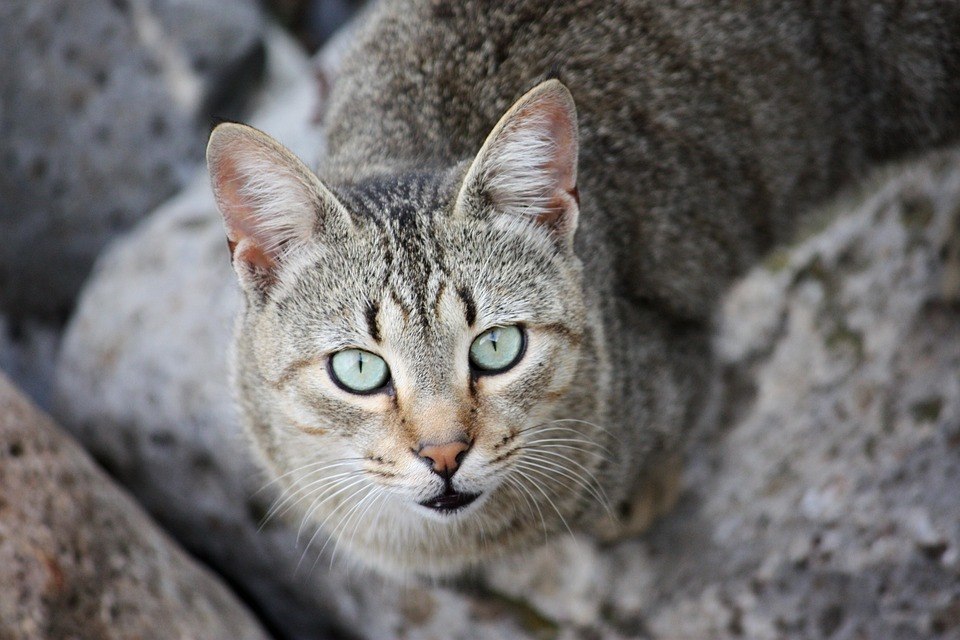Different pupil shapes in animals
on May 23, 2023Have you ever noticed that animals have different pupil shapes? What do these different shapes mean? And what is the importance of where the eyes are situated? Once you understand this, you will understand the behaviour of animals better. This is a very fascinating topic, so let’s dive into it.
First, what is the function of the pupil?
The function of the pupil is to allow light to pass through and enter the eye. The pupil appears black because the light is absorbed by the eye tissue. The light that enters interacts with the retina to provide images to the brain. The pupil can change size to allow more or less light to enter the eye and therefore control how much light is let into the eye.
Why does the placement of the eyes make a difference?
Predators will have forward-facing eyes, also known as binocular vision. Binocular vision means that the two eyes see together. Using two eyes simultaneously is essential for the brain to allow us to see in 3D and judge distances and depth. Seeing with two eyes is better than using one eye at a time, as the combined image from the two eyes has a better quality than that of a single eye.
Wide-angle view is more commonly found in herbivores, and this is known as monocular vision. The eyes of an animal with monocular vision are positioned on opposite sides of the animal's head, enabling it to see two objects at once. This makes it easier for them to look out for predators. It is important as these animals need to be constantly aware of lurking predators.
Does the shape of the pupil serve any purpose?
There are multiple different pupil shapes, but we will investigate three shapes. Round (circular), vertical slits and horizontal slits as these are the ones that can be found in animals seen at Sabi Sabi.
Round/ Circular
This pupil shape is more commonly found in daytime animals like wild dogs, cheetahs and larger cats like lions and leopards. This shape allows animals that are higher off the ground to have an even focus across the whole visual field which helps them when surveying their surroundings.
Think about a lion chasing after a zebra. While the zebra is running at full speed to escape from the lion’s claws, the lion must be able to scan its surroundings while running after the zebra. It needs to observe any obstacles like fallen over branches or mud wallows that might result in injury or break its speed. The pupil helps to judge when the lion is close enough to its prey to pounce, otherwise, it might miss its target.

Horizontal slits
Horizontal slits are found in prey species like zebra, wildebeest, impala and even mongoose. The horizontal slit allows the animal to scan its surroundings with a wide-angle view. This enables them to spot predators stalking them from far away. Take note that these animals’ eyes are mostly situated further apart from each other.
It is quite interesting that when they lower their head down while feeding, their eyes rotate in the head to maintain parallelism with the ground. The eyes must spin in opposite directions in the head to do this. It allows them to be always fully aware of their surroundings, even when they are feeding.

Vertical slits
This design has been used a lot in the past in storybooks and movies as it is portrayed as an evil sign.
This shape is found in animals that are lower to the ground and are often ambush predators like snakes, small cats, and foxes. The vertical slits allow the animals to accurately judge the distance on a short range. Let’s use a cat as an example. When stalking mice, the cat will strike from a distance to catch its prey. Now we all know how quick a mouse can be, so when the cat attacks it must calculate exactly how far away it is from its target, otherwise the mouse can escape when the cat comes flying through the air.
With this pupil shape the surrounding area does not have such a significant purpose. The predator doesn’t have to run far after their prey like a lion would do. This shape is also more common in nocturnal animals as the pupil can expand.

Other shapes include the W-shaped pupil that is found in species like Cuttlefish and the U-shape found in dolphins. Next time when you are on safari pick up a pair of binoculars and look closely at the animal’s eye to notice the shape of the pupil.
Blog by Dieter Lategan (Little Bush Camp Ranger)







